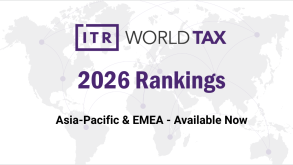In last year's eighth edition of China – Looking Ahead, the article Now that we got data, what are we gonna do with it? – TP challenges and opportunities discussed the following three broad issues.
The first was TP compliance. The Chinese tax authorities, to further drive TP compliance, had introduced a multi-criteria profit monitoring mechanism for large multinational enterprises (MNEs), as well as for taxpayers with complex related-party transactions. In 2018, the Jiangsu Provincial Tax Bureau rolled-out the profit monitoring mechanism for 150 large MNE taxpayers. This risk-based profit monitoring mechanism leverages big data analysis tools and provides the tax authorities with multiple sources of obtaining information on taxpayers. The mechanism was later introduced in other cities and provinces by the State Taxation Administration (STA).
The second was 'non-trade' transactions. The Chinese tax authorities continued to centre their enquiries and investigations on non-trade transactions, such as outbound royalty and service fee payments. In particular, greater scrutiny was applied to taxpayers paying large sums of fees overseas despite having a mainly domestic supply chain.
The third was international disputes. The STA increased its resources and efforts to resolve international disputes through prioritising mutual agreement procedure (MAP) cases in line with China's commitment to the BEPS Action 14 minimum standards recommendations. As a result, the STA and competent authorities resolved a substantial number of MAP cases in 2018. There was significant progress in the advance pricing agreement (APA) negotiations with competent authorities as well.
In the absence of significant new TP policy or regulatory changes in China in 2019, these three trends have remained the priorities of the STA. At the same time, the STA and the local tax authorities have exhibited a pragmatic approach to TP monitoring and enforcement, in view of the challenging economic environment.
There are still some important enforcement trends in 2019, which we examine here. The sister chapter Outbound investment and TP: A more robust framework emerges also looks at advances with the MAP and APA programmes, particularly in the context of assisting outbound investment. A further chapter, Hong Kong SAR's new TP rules: Convergence with global norms, looks at the 2018 introduction of the TP rules, and the comprehensive guidance set out in 2019.
China's TP enforcement environment
In last year's edition of China – Looking Ahead, the article Seeing the tax trees from the data forest – managing tax administration in the digital age explained the steps taken by the STA to transform the Chinese tax authorities and make them more tax service oriented. From a TP perspective, the STA has been redirecting its effort from an investigative approach to a preventative approach, referred to as the 'administration/management' approach.
At present, the administration/management divisions of the tax authorities are primarily responsible for inspecting contemporaneous documentation and related-party transaction filing forms, while the investigation divisions conduct TP audits. The planned transition aims to reduce the relative role of TP formal audits. Going forward, these are not seen as key tax revenue collection tools for the Chinese tax authorities and instead a more significant role pivots to administration/management division reviews and follow-up queries.
At the same time, the STA and local tax authorities have moved away from focusing on the amount of tax collected as a key performance indicator (KPI) for tax officers. We observe that tax inspectors in Tier 1 cities are becoming more commercially aware in their understanding of TP issues, and are more understanding and reasonable when conducting TP assessments and audits. The tax authorities in smaller cities, nonetheless, remain aggressive towards TP audit targets, especially where local circumstances put them under pressure to raise tax revenues.
In some audit cases, complications arise in practice over which tax authority division (the tax inspection division or the international tax/TP division) should manage TP audits. TP cases are usually dealt with by the international tax/TP division, but in some local authorities this can sometimes overlap with other divisions. Where a tax inspection division asserts its authority, the arguments may not be fully focused on TP technical matters, which complicates life for taxpayers.
A further difference is that tax adjustments imposed by the international tax/TP division would typically carry less severe penalties than tax adjustments made by the tax inspection division. The adjustments made by the international tax/TP division are usually subject to payment interest, whereas the adjustments made by the tax inspection division can carry late tax payment fines, a much heavier penalty. Having said that, cases initiated by the tax inspection division, in many instances, would be passed over to the international tax/TP division if sufficient explanation is provided to the tax inspection division during the process to demonstrate that the disputed matters are, in fact, solely TP related.
Taking a high-level view, the overall picture is that the amount of additional taxes collected from formal TP audits dropped in recent years. It is understood that in 2018 this was approximately RMB 3.5 billion ($494 million), a reduction of 30% compared to 2017. The administration/management approach, conversely, brought in additional taxes of approximately RMB 54.4 billion in 2018, and is about 8% higher than in 2017.
Under the administration/management approach, the Chinese tax authorities' focus is on strengthening the administration of related-party transaction filings and TP documentation reports to encourage compliance and to nudge taxpayers to proactively adjust their profits (and tax paid) to meet the arm's-length standard. This 'cooperation model' is viewed as a key development area by the STA, and they are focused on fostering frequent communication between tax authorities and taxpayers to strengthen tax administration in China.
The emphasis on TP compliance is evident in the profit monitoring mechanism, launched in 2018 for large MNEs and enterprises with complex related-party transactions. This was discussed at length in the TP chapter of the eighth edition of China – Looking Ahead. In the Jiangsu province, where the mechanism was first introduced, the tax authorities have selected a further 70 taxpayers in 2019 to be subject to the mechanism, bringing the number of taxpayers under monitoring to a total of 220. The selected taxpayers have been requested to complete multiple forms, some quite onerous, so that the tax authorities will be able to provide specific feedback to taxpayers on improvements/modifications to their tax risk management systems and TP policies. The process is not yet complete but, once completed, the results will be communicated to the relevant taxpayers.
The Guangdong and Sichuan provinces are adopting the same approach with support from the Jiangsu province authorities and the STA.
Spotlight on service and royalty fees
The long-standing focus of the Chinese tax authorities on non-trade related-party transactions continued into 2019.
The Chinese tax authorities traditionally hold the view that inter-company cross-border service fee and royalty payments are high-risk transactions from a TP perspective. The authorities still make a point of reviewing transactions of this type, conducted by Chinese subsidiaries of MNEs, even where the profit margin left in China remains high following deductions for the payments. Of particular interest to the tax authorities are taxpayers with largely domestic supply chains, such as automotive parts manufacturers and distributors, that source most of their components/materials within China and sell to Chinese customers. The Chinese tax authorities question the rationale for (and value of) the support/technology received by the Chinese entity from overseas related parties, irrespective of which service fees/royalties arise.
To give a sample of recent instances where the Chinese tax authorities reviewed outbound non-trade payments made in 2017 and 2018, we might point to the following:
1) The Shenzhen tax authority's anti-avoidance branch, established after the merger of the local and state tax bureaus in 2018, initiated a preliminary information and data collection on more than 300 enterprises with large outbound non-trade payments. It required these enterprises to perform self-assessment and make adjustments, as appropriate;
2) The Beijing tax authorities, in 2019, have also similarly increased their efforts on conducting reviews on outbound payments; and
3) The Tianjin Port free trade zone tax bureau also issued review notices to 14 companies that have significant outbound payments.
While self-assessments have become a more common tool used by the Chinese tax authorities, there are various audit cases we have become aware of through business engagement or reports in the public domain.
In an example of a formal audit case, the Anhui tax authorities reported in December 2018 on their conclusion of a TP audit on a large outbound payment of service fees (approximately RMB 120 million), made from a local Chinese entity to its overseas headquartered company. The Chinese entity has been making above-average operating profits for its sector, even after paying these fees.
In the past, many companies would have thought that leaving above-average margins in China would give them some measure of protection. The Anhui tax authorities, nevertheless, initiated an investigation and focused on the substance of the intragroup service arrangement. After a comprehensive fact-finding exercise, the Anhui tax authorities concluded that the Chinese entity had its own well-resourced management system and operated its business relatively independently. Consequently, payment for the services from the headquarters could not be reasonably justified on substance grounds. The Anhui tax authorities further revealed that the Chinese entity actually paid the service fee amount based on a general cost allocation from the headquartered company, and argued that part of the service charges failed to pass the 'benefits test'. The Anhui tax authorities disallowed the deduction for a portion of the service fees, resulting in a tax adjustment of RMB 8.2 million.
The Ningxia Yinchuan economic and technical development zone's (ETDZ) tax authorities reported, in September 2018, of a case where a Chinese-based taxpayer, as a service recipient, entered into service agreements with two service providers (one with a Hong Kong SAR related party and another with a second related-party entity) for similar consulting services. During the investigation, the Yinchuan ETDZ authorities concluded that the Hong Kong SAR entity did not have sufficient technical capability and business substance to be able to provide the consulting services noted in the service agreement. The authorities disallowed the deduction for the fees paid to the Hong Kong SAR entity, resulting in a tax adjustment of approximately RMB 1.4 million.
With respect to licensing transactions, MNEs should ensure that royalty fee recipients have the necessary substance to control and perform development, enhancement, maintenance, protection and exploitation (DEMPE) functions related to intangibles. This is crucial to sustaining the position that the recipients are entitled to the royalty fee as intangible asset legal/economic owner. The DEMPE analysis framework was introduced into the OECD TP Guidelines for Multinational Enterprises and Tax Administrations issued in July 2017 (OECD TP Guidelines) following the BEPS project and adopted by China in Announcement 6, also in 2017.
From the point of view of sustaining the taxpayer TP position vis-a-vis the Chinese tax authorities, it is generally preferable to align legal ownership with the control and performance of DEMPE functions and substance. However, it can be acceptable to the authorities that the legal owner of the intangible and the entity performing DEMPE functions are different entities. In this regard, the Chinese tax authorities can accept that MNEs may prefer to centralise legal ownership of the intangibles in one entity for ease of tracking, for example in the headquarter entity, but that the substance and the actual performance and control of DEMPE functions are in the operating entities. However, for such cases, the Chinese tax authorities take the position that the entity with such centralised legal ownership should be located in the same jurisdiction as those conducting substantive activities, so that there is no tax advantage to be gained from separating legal ownership from performance of DEMPE.
Substance requirements are now being further raised across the world, with offshore jurisdictions such as the Cayman Islands having enacted economic substance laws in response to peer review demands by the forum on harmful tax practices, which continues to pursue action on harmful tax practices pursuant to BEPS Action 5. The EU code of conduct group is making even greater demands. Commonly seen holding, finance and IP management structures located in the Cayman Islands and elsewhere will have adapt to these economic substance laws or otherwise be 'structured out'. MNEs – and especially Chinese 'going-out' enterprises – are consequently having to revisit their structures, not only merely in response to economic substance laws but also for overall TP risk management purposes. As noted above, structures that lack substance are already under pressure from a TP perspective. Details of these economic substance laws are discussed in the chapter, Offshore economic substance laws: Implications for Hong Kong SAR's funds sector.
Equity transfers
In the TP chapter of China – Looking Ahead's eighth edition, we noted that more equity transfer TP audit cases are being reported. This trend has continued in 2019, with several reported cases detailed below.
A recently concluded equity transfer case was reported by the TP team of Changchun tax authority in March 2019, published on the website of the China TP News. A joint-venture (JV) set up in Changchun had incurred consecutive losses for a number of years, and its foreign investor decided to divest and sell all of its JV equity to the domestic investor. Both parties held the position that no gain should be recognised on the equity transfer, noting the sustained business losses.
However, the Changchun tax authority's TP team found that the value of the land use rights controlled by the JV had increased enormously over the 10 years they had been held (they had originally been purchased at a relatively low price). The land value was reported in the books of the JV using the cost method. The authorities rejected this as a valid measure of arm's-length value for determining the equity transfer price, and demanded market valuations be obtained. A valuation was later performed by professional firms, and a tax adjustment of approximately RMB 50 million was made.
An enforcement case was also reported in relation to an equity transfer in Kunshan, Jiangsu province (reported in Jiangsu Economic News in July 2018). In this case, the tax authorities initiated an investigation regarding the equity transfer of a Chinese entity with a multi-level overseas ownership structure, headquartered in the British Virgin Islands (BVI). The subsidiaries were all registered in tax haven jurisdictions. As required by the TP regulations, the transfer of equity was disclosed in the TP local files and this attracted the attention of the tax authorities. Accordingly, the authorities prepared a comprehensive analysis and concluded that this intra-group equity transfer was not priced at arm's length. After several rounds of discussions and negotiations, the Chinese entity and the authorities mutually agreed with a tax adjustment of more than RMB 20 million.
As with all the equity transfer cases, a tax valuation report is often important evidence to demonstrate that there have been adequate studies undertaken by taxpayers on the transfer, and the values have been appraised using the most appropriate valuation methods. The local tax authorities now routinely expect such tax valuations to be performed.
Looking ahead
In China, the increasing sophistication of the STA and the local tax authorities, in terms of their TP knowledge and the enhanced tools at their disposal, means that taxpayers are constantly on the surveillance radar. As noted in this chapter, non-trade payments and equity transfers are key transactions that will constantly be reviewed by the Chinese tax authorities. However, at the same time taxpayers expect better tax services from the STA and local tax authorities, and the latter are seeking to respond to this demand.
It is imperative for MNE taxpayers, outbound and inbound alike, to be able to defend their TP models and have strong documentation in place. The cooperation model advocated by the STA encourages frequent communication between the taxpayers and the STA, as well as the local tax authorities. This will hopefully smooth the relationships between the parties and may make future investigations and interactions less confrontational.
The authors would like to thank Alfred Wang, KPMG China senior manager, and Lino Lv, KPMG China manager, for their contributions to this article.
Xiaoyue Wang |
|
|---|---|

|
Partner, Tax KPMG China Beijing Tel: +86 (10) 8508 7090 Xiaoyue Wang joined KPMG China in November 2016 and is the transfer pricing national leader as of December 1 2018. Prior to joining KPMG, Wang had a long and distinguished career at the State Taxation Administration (STA) of China, rising to the position of deputy director general of the international taxation department. Wang was the top transfer pricing official at the STA for many years. She represented the Chinese government in international negotiations on tax policy and administration. She led the development, drafting and implementation of all major transfer pricing, advance pricing arrangement (APA) and anti-avoidance initiatives, both in terms of legislation and tax administration, and developed a highly effective national structure for transfer pricing and anti-avoidance administration within the STA. Since joining KPMG, Wang has led many large TP engagements, including bilateral APAs, MAPs, TP defence, BEPS documentation and global value chain restructuring, etc. Her work has involved companies all over the globe and in a wide range of industries, including electronics, automobiles, finance, consumer goods, telecommunications, real estate, pharmaceutical and luxury fashion. Wang has a PhD in economics from Renmin University of China and an LLM in taxation from Golden Gate University in the US. |
Choon Beng Teoh |
|
|---|---|

|
Director, Tax KPMG China Shanghai Tel: +86 21 2212 4527 Choon Beng Teoh is a director with the global transfer pricing team of KPMG China and is based in Shanghai. Choon Beng has experience in multi-jurisdictional planning studies, dispute resolution, value chain analysis and restructuring of operating models, as well as leading and managing global transfer pricing documentation projects. His client portfolio includes top-tier multinational companies across a variety of industries, including pharmaceutical, automotive, retail and IT. He also occasionally co-authors articles on China-related transfer pricing topics for publications. Choon Beng graduated with a law degree from the London School of Economics and is a chartered accountant with the Institute of Chartered Accountants in England and Wales. Prior to joining KPMG China, Choon Beng practised in another leading accounting firm in London in the area of international tax and transfer pricing. |













